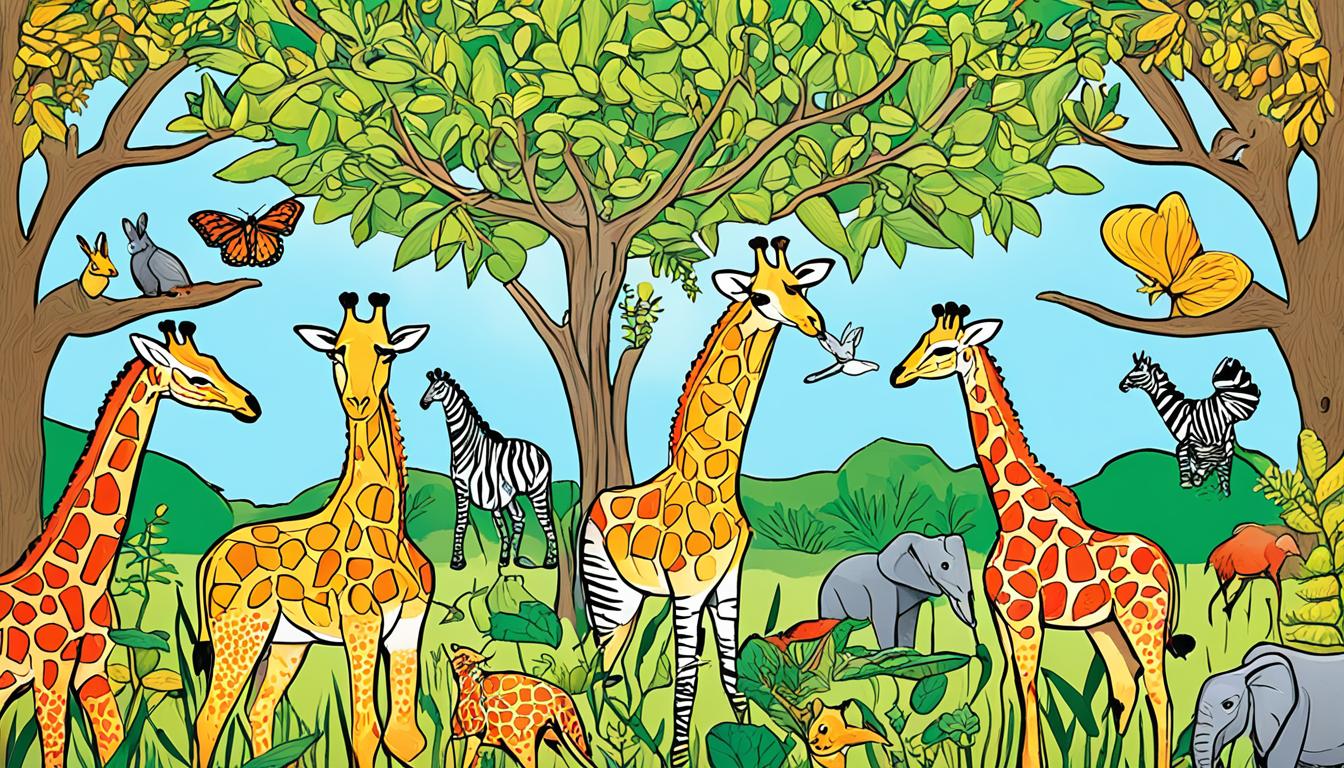Kuwait Biodiversity: Animal and Plant Species and What Is Under Threat
Welcome to our article on Kuwait biodiversity. In this section, we will explore the incredible animal and plant species that call Kuwait home, as well as the various threats they face. Let’s delve into the fascinating world of Kuwait’s desert ecology, wildlife conservation, and the importance of environmental sustainability.
Kuwait’s unique geographical features contribute to its rich biodiversity. The country is known for its flat topography and numerous valleys that descend mainly northeastwardly. With a coastline stretching around 660 km, including nine offshore islands, Kuwait Bay stands out as a vital nursery ground for fish and shrimp larvae. This marine environment boasts an abundance and diversity of species, including wetland areas, fish, turtles, and coral reefs, making it a true gem for ecosystem preservation.
Key Takeaways:
- Kuwait’s flat topography and valleys contribute to its unique biodiversity.
- Kuwait Bay serves as a crucial nursery ground for marine species.
- The country’s marine environment is home to diverse ecosystems and habitats.
- Wetland areas, fish, turtles, and coral reefs are prevalent in Kuwait’s marine environment.
- Preserving the natural habitats of Kuwait’s marine species is essential for ecological diversity.
The Impact of Human Influence on Kuwait’s Biodiversity
The 1990-91 invasion of Kuwait by Iraqi forces and the subsequent war caused significant damage to the country’s biodiversity. The invasion resulted in air pollution from burning oil wells, crude oil spills in marine and land environments, and the destruction of soil and land due to bombings and military activities. The aftermath of the war led to the realization of the fragility of Kuwait’s natural landscape and the importance of addressing environmental damage. However, the response to address the damage was delayed, and negligence, lack of awareness, and unwillingness to take responsibility have contributed to the continued degradation and damage to Kuwait’s biodiversity.
In the wake of the invasion and war, Kuwait experienced biodiversity loss and ecosystem breakdown. The destruction caused by the war and human influence have disrupted the delicate balance of natural habitats and the survival of various species. The pollution, both in the air and water, has had detrimental effects on the flora and fauna in Kuwait. These continued human activities, including oil spills, bombings, and military operations, have had long-term consequences on the ecosystem and its ability to support diverse plant and animal life.
Quotes:
“The aftermath of the war led to the realization of the fragility of Kuwait’s natural landscape and the importance of addressing environmental damage.”
It is crucial to address the impact of human influence on Kuwait’s biodiversity to prevent further degradation and loss of valuable ecosystems. Immediate action is needed to enforce regulations, raise awareness, and promote sustainable practices that prioritize the preservation of Kuwait’s rich biodiversity. Failure to do so could result in irreversible damage to the delicate balance of flora and fauna in Kuwait’s natural habitats.
| Environmental Damage | Effect on Biodiversity |
|---|---|
| Air pollution from burning oil wells | Disruption of plant growth and respiratory issues for animals |
| Crude oil spills | Contamination of marine and land habitats, leading to the death and displacement of species |
| Destruction of soil and land | Loss of natural habitats and disruption of the ecosystem |
Biodiversity Loss and Ecosystem Breakdown
The invasion and war in Kuwait resulted in the loss of numerous plant and animal species, as well as the breakdown of essential ecosystems. The consequences of these events have had a devastating impact on Kuwait’s biodiversity and natural habitats.
One of the major threats to biodiversity in Kuwait is oil spills, which have contaminated both marine and land habitats. These spills have led to the death and displacement of marine life, plants, and animals, disrupting the delicate balance of the ecosystems. The ongoing consequences of oil spills have had long-lasting effects, impeding the growth and survival of plants and animals.
Furthermore, the pollution caused by burning oil wells and military activities has exacerbated the environmental impact. The release of pollutants into the air, soil, and water has further deteriorated the health and sustainability of the ecosystems in Kuwait.
Habitat destruction is another key factor contributing to biodiversity loss in Kuwait. Human activities such as urbanization, industrial expansion, and infrastructure development have resulted in the destruction of natural habitats, depriving countless species of their homes and food sources.
In addition to habitat destruction, pollution from various sources, such as industrial waste and agricultural run-off, has significantly impacted Kuwait’s biodiversity. These pollutants contaminate water bodies, soil, and air, posing a threat to the survival of both plant and animal species.
The combination of oil spills, pollution, and habitat destruction has led to the breakdown of essential ecosystems in Kuwait. The intricate connections and dependencies between different species have been disrupted, causing imbalances that affect the overall health and stability of the environment.
It is crucial for Kuwait to address these issues and implement effective measures to prevent further biodiversity loss and ecosystem breakdown. Conservation efforts, stricter regulations, and sustainable practices are necessary to protect and restore Kuwait’s biodiversity for future generations.
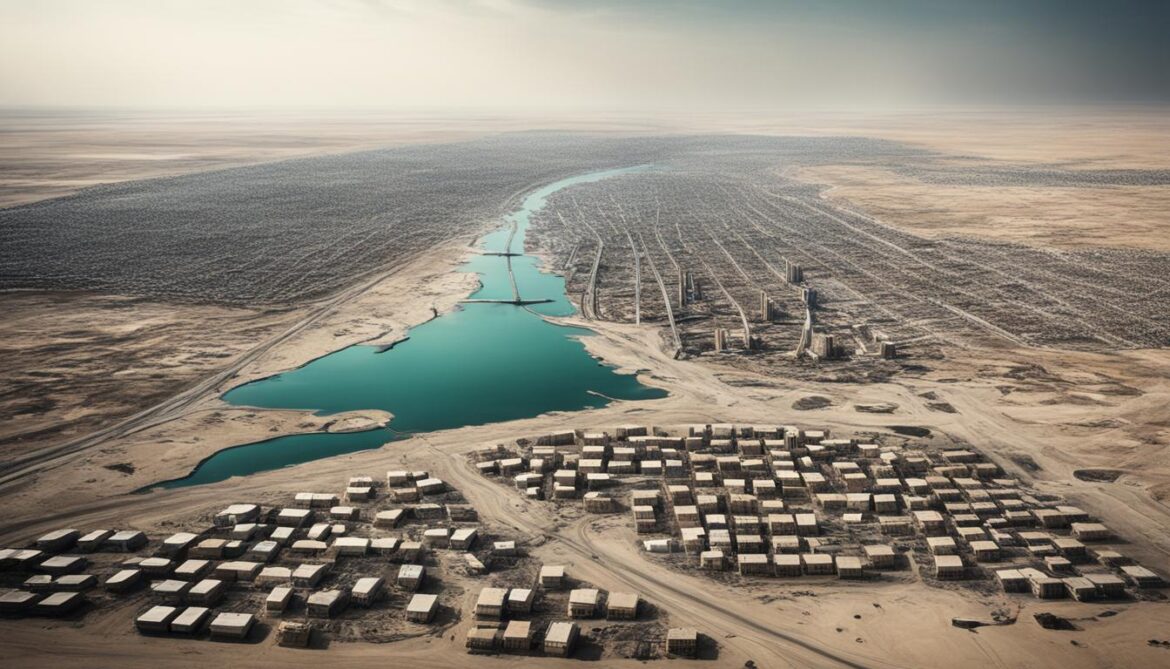
Marine Biodiversity Degradation in Kuwait
Kuwait faces ongoing challenges with marine biodiversity degradation. The discharge of treated and untreated wastewater, along with industrial pollutants, is causing significant damage to marine life and biodiversity. Pollution from land and marine transportation vehicles further exacerbates the problem, depleting marine ecosystems and threatening the survival of various species.
One of the major contributors to marine biodiversity degradation is overfishing, including illegal fishing practices. Bottom trawling and fishing in breeding areas pose significant threats to the delicate balance of marine biodiversity in Kuwait. These unsustainable fishing practices disrupt the natural reproductive cycle of species, leading to population decline and imbalance within the ecosystem.
Another issue of concern is the destruction of coral reefs in Kuwait. Anchoring boats in coral reef areas causes physical damage to the reefs, jeopardizing the delicate and diverse marine life that relies on them. Coral reefs are essential habitats that support an array of marine species and provide protection for coastlines against storms and erosion.
To address marine biodiversity degradation, Kuwait is implementing stricter regulations and enforcement measures. Conservation initiatives and sustainable fishing practices are being promoted to protect vulnerable marine ecosystems. Efforts are also being made to raise awareness among fishermen and the general public about the importance of preserving marine biodiversity and the detrimental effects of pollution, overfishing, and destructive practices.
Table: Impacts of Marine Biodiversity Degradation in Kuwait
| Impacts | Causes |
|---|---|
| Depletion of marine life and biodiversity | Discharge of treated and untreated wastewater, industrial pollutants |
| Population decline and imbalance of marine species | Overfishing, illegal fishing practices |
| Destruction of coral reefs | Anchoring boats in coral reef areas |
The image above illustrates the impact of marine biodiversity degradation in Kuwait, highlighting the importance of preserving and protecting these valuable ecosystems for future generations.
Land Biodiversity Challenges in Kuwait
Kuwait faces various challenges in preserving its land biodiversity due to overgrazing, habitat destruction, and human activities that disrupt the delicate desert ecosystem. These challenges have significant implications for the survival of numerous species and the overall health of the environment.
Overgrazing poses a major threat to land biodiversity in Kuwait. The excessive grazing of livestock leads to the depletion of vegetation, soil degradation, and erosion. As a result, the habitat and food sources for many plant and animal species are compromised, putting their survival at risk.
Habitat destruction is another significant challenge faced by Kuwait’s land biodiversity. Unauthorized quarries and other environmental infringements contribute to the loss and fragmentation of natural habitats, further exacerbating the decline of species populations. The destruction of these habitats disrupts the intricate balance of the ecosystem, leading to a decline in biodiversity.
Efforts to restore and rehabilitate damaged areas and enforce stricter regulations are crucial for protecting and preserving land biodiversity in Kuwait. Restoration projects can help regenerate the vegetation and create suitable habitats for a diverse range of species. Additionally, the implementation of stronger regulations will help prevent further habitat destruction and biodiversity loss.
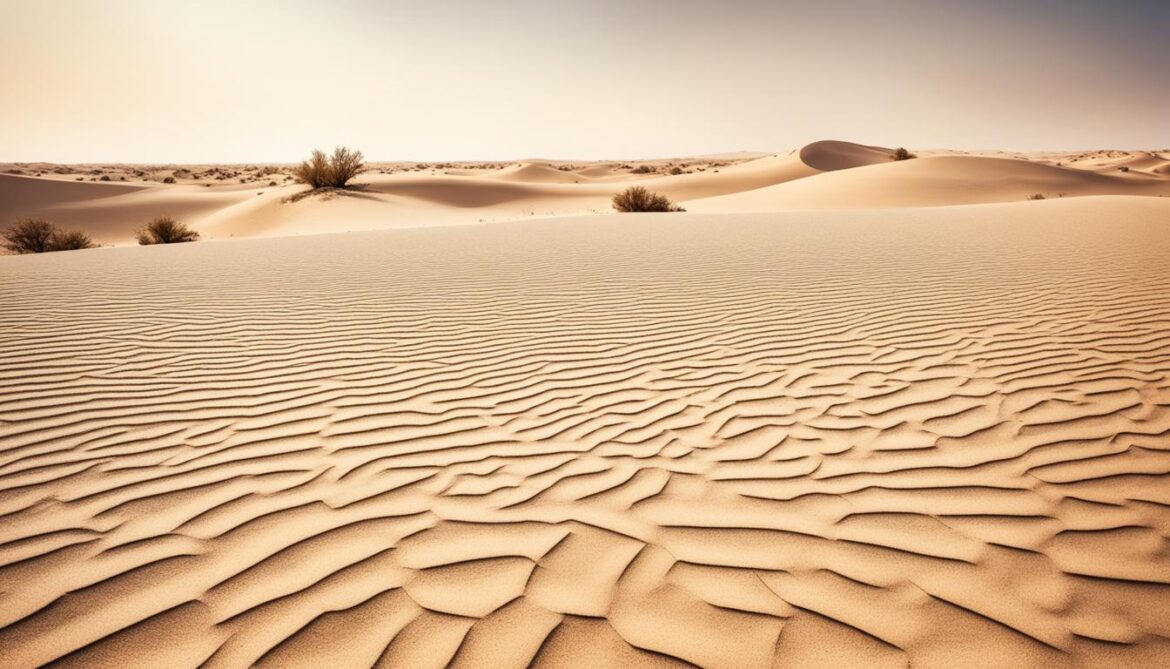
“Conserving land biodiversity in Kuwait is of utmost importance. By addressing overgrazing, habitat destruction, and implementing stricter regulations, we can protect the delicate desert ecosystem and ensure the survival of diverse plant and animal species.”
Urban Expansion and its Impact on Biodiversity
Kuwait’s urban expansion presents significant challenges for biodiversity, as new urban, residential, industrial, and tourism areas continually encroach upon natural desert environments. This rapid urbanization is driven by the country’s growing population and increasing economic development.
The construction of roads, power generation plants, defense installations, and infrastructure to support the oil industry contributes further to habitat encroachment. These activities disrupt and fragment natural habitats, leading to the displacement and loss of many plant and animal species that rely on these areas for survival.

Importance of Conservation Efforts
Efforts to protect and restore Kuwait’s biodiversity are crucial for preserving its unique ecosystems and ensuring a sustainable future. Conservation measures, including the establishment of protected areas and the implementation of sustainable practices, are needed to mitigate further damage and promote biodiversity recovery. Raising awareness about the importance of conservation and sustainable practices is essential for promoting positive change and ensuring the protection of Kuwait’s biodiversity for future generations.
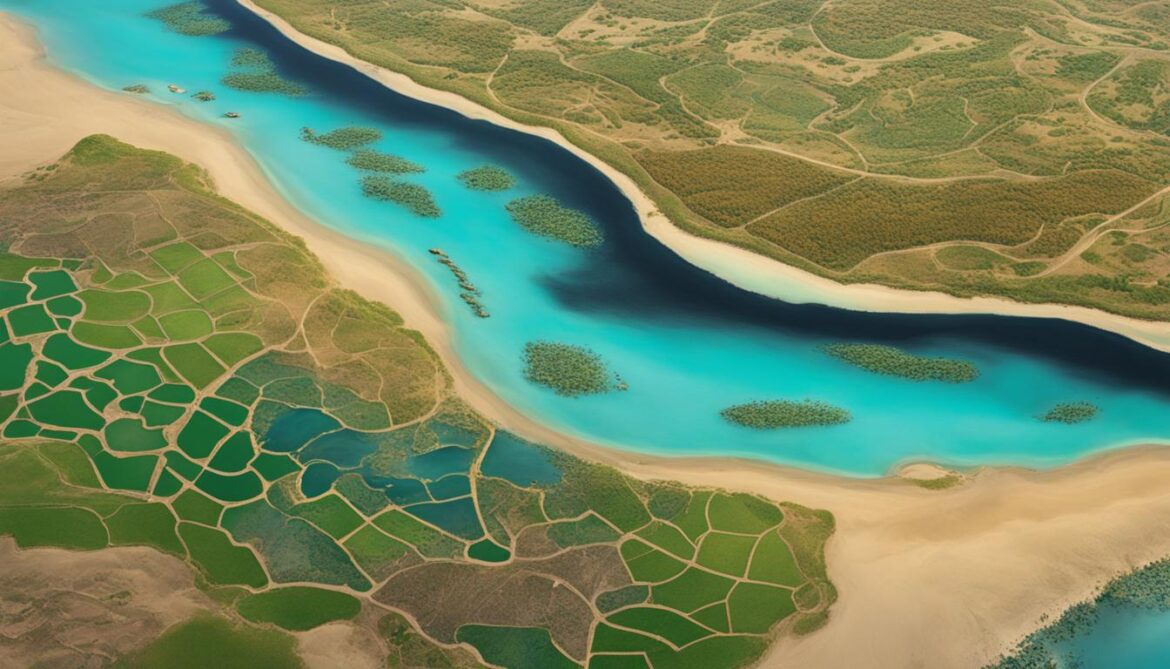
The Role of Protected Areas
Protected areas play a vital role in safeguarding Kuwait’s biodiversity. By designating specific regions as protected, these areas serve as refuges for native plants and animals, allowing them to thrive and reproduce without human interference. These protected areas also help prevent habitat destruction and provide opportunities for ecological research and education.
Promoting Sustainable Practices
To ensure the long-term conservation of Kuwait’s biodiversity, it is crucial to promote sustainable practices in various sectors. Sustainable agriculture practices, such as organic farming and integrated pest management, reduce the use of harmful pesticides and protect the soil and water quality. Similarly, adopting sustainable fishing practices, such as catch limits and avoiding destructive fishing methods, helps safeguard marine biodiversity and maintain healthy fish populations.
“Conservation is not just the responsibility of environmental organizations. It is a collective effort that requires the participation of individuals, communities, and governments.”
Building Awareness and Education
Raising awareness about the value of biodiversity and the importance of conservation is essential for fostering a culture of environmental responsibility. Education programs, public campaigns, and community engagement initiatives can help empower individuals to make sustainable choices and take active steps towards biodiversity conservation in their daily lives.
By recognizing the significance of biodiversity and implementing conservation efforts, Kuwait can protect its unique ecosystems and contribute to the global efforts of preserving our planet’s natural heritage.
Call for Responsibility and Awareness
Addressing the impact of human influence on Kuwait’s biodiversity requires a collective effort from individuals, communities, and authorities. Raising awareness about the importance of conservation and sustainable practices is crucial for promoting positive change and ensuring the protection of Kuwait’s biodiversity. Taking responsibility for our actions and actively participating in conservation efforts is essential for preserving the rich biodiversity of Kuwait for future generations.
“Conservation is a matter of responsibility. We have a shared duty to protect the unique biodiversity of Kuwait and safeguard its natural treasures for the generations to come.” – Kuwait Biodiversity Conservation Society
The Power of Awareness
Increasing awareness about the fragility and diversity of Kuwait’s ecosystems is key to driving action towards conservation. By educating individuals and communities about the value of biodiversity and the potential consequences of its loss, we can inspire a sense of responsibility and a collective commitment towards preserving Kuwait’s natural heritage.
A Call to Action
We all have a role to play in protecting Kuwait’s biodiversity. Whether it’s making sustainable choices in our daily lives, supporting conservation initiatives, or advocating for stronger environmental policies, every action counts. By taking responsibility for our impact on the environment and actively engaging in conservation efforts, we can contribute to the preservation of Kuwait’s unique plant and animal species, natural habitats, and ecological diversity.
Partnerships for Conservation
Collaboration between individuals, communities, NGOs, and government authorities is essential for effective biodiversity conservation in Kuwait. By fostering partnerships and working together towards shared goals, we can amplify our impact and implement comprehensive solutions to address the challenges facing Kuwait’s biodiversity.
Building a Sustainable Future
Conservation is not just about protecting biodiversity today; it’s about ensuring a sustainable future for generations to come. By integrating conservation practices into our daily lives, supporting sustainable development, and advocating for responsible environmental policies, we can contribute to the long-term preservation of Kuwait’s rich ecological heritage.
Join the Movement
Every individual has the power to make a difference. By joining the movement for biodiversity conservation in Kuwait, you can play a crucial role in preserving the country’s unique ecosystems. Stay informed, spread awareness, and actively participate in conservation efforts to help protect Kuwait’s natural treasures for future generations.
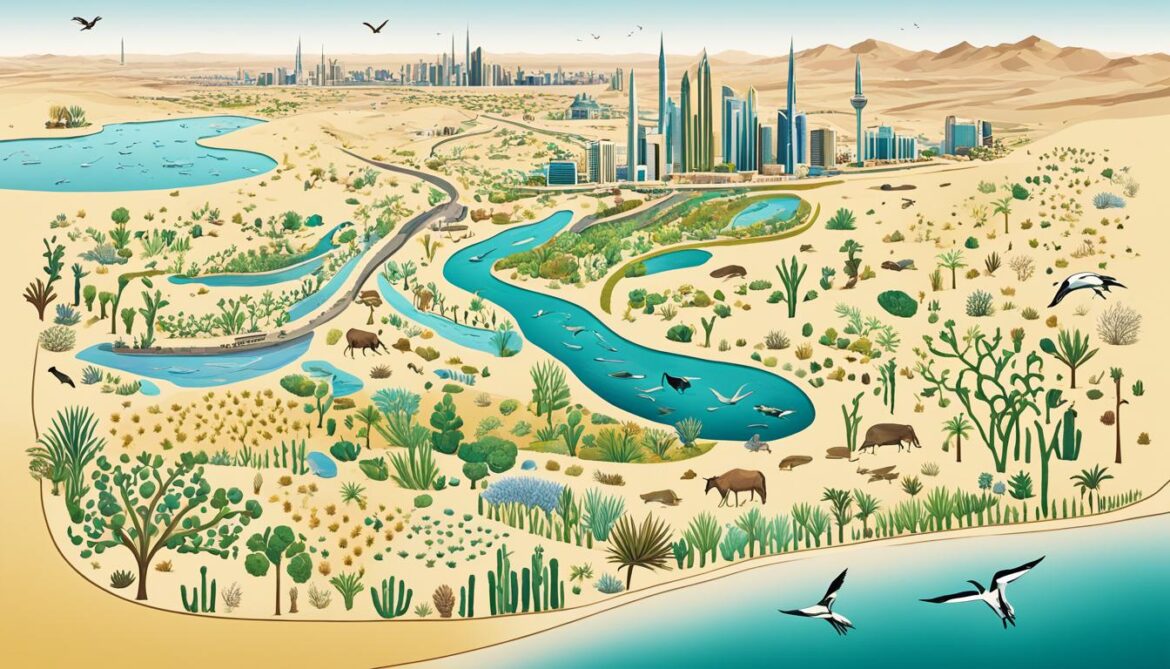
Efforts to Enhance Implementation of the Convention
Kuwait is committed to enhancing the implementation of the convention through a series of strategic measures. The country has made significant progress in implementing the National Strategy for Biodiversity, which includes various initiatives aimed at protecting and preserving Kuwait’s rich biodiversity.
- The adoption of environmental impact studies for development projects is one of the key measures taken by Kuwait. These studies help assess the potential impact of new projects on biodiversity and ensure that necessary conservation measures are put in place.
- Another important step taken by Kuwait is the establishment of nature reserves. These protected areas play a vital role in safeguarding the natural habitats of various species and promoting biodiversity conservation.
- Kuwait is also investing in research on desert plants and animals. This research provides valuable insights into the unique ecosystem of Kuwait and helps inform conservation efforts.
In line with the 2020 Aichi Biodiversity Targets, Kuwait aims to increase the coverage of protected areas to 20%. To achieve this goal, the country has implemented measures such as importing exotic plant species for greening purposes. Additionally, Kuwait has implemented regulations to control the entry of plants infested with pests, ensuring the protection of native flora and fauna.
However, Kuwait recognizes that enhancing the implementation of conservation measures requires a comprehensive approach. This includes coordination among various stakeholders, capacity-building programs to enhance knowledge and skills, and effective legislation implementation.
Coordination
Coordination is crucial to ensure the successful implementation of biodiversity conservation measures. Kuwait aims to strengthen coordination among relevant authorities and organizations involved in biodiversity protection. By working together, these entities can exchange knowledge, share resources, and effectively address challenges to biodiversity preservation.
Capacity-Building
To enhance the implementation of conservation measures, Kuwait acknowledges the need for capacity-building programs. These programs focus on equipping individuals and organizations with the necessary knowledge, skills, and resources to effectively contribute to biodiversity conservation efforts. By investing in capacity-building initiatives, Kuwait aims to foster a culture of environmental stewardship and empower conservation champions.
Legislation Implementation
Effective legislation plays a vital role in ensuring the protection of Kuwait’s biodiversity. Kuwait is committed to implementing and enforcing relevant laws and regulations to address the various threats to biodiversity. Stricter enforcement measures, including penalties for biodiversity-related offenses, are essential to deter unsustainable practices and promote responsible environmental behavior.
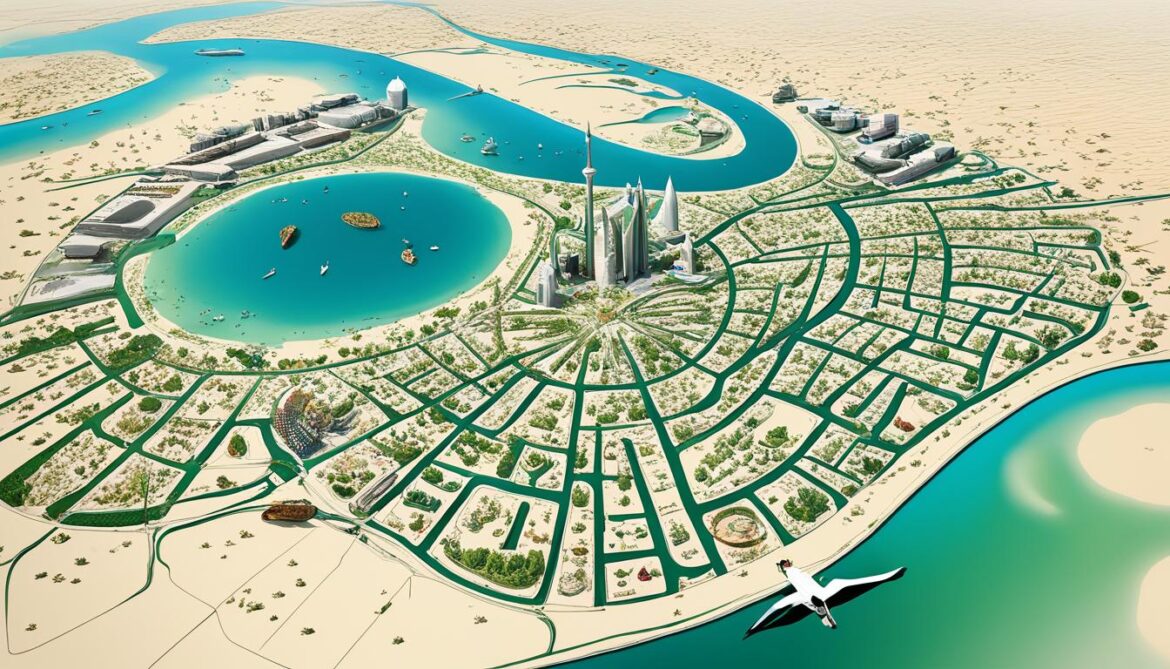
Efforts to enhance the implementation of the convention in Kuwait demonstrate the country’s dedication to biodiversity conservation. Through a combination of strategic measures, Kuwait strives to protect its unique ecosystems, preserve its rich biodiversity, and create a sustainable future for generations to come.
Mechanisms for Monitoring and Reviewing Implementation
In order to effectively manage and protect Kuwait’s biodiversity, it is essential to establish mechanisms for monitoring and reviewing the implementation of conservation efforts. The Environmental Public Authority in Kuwait plays a vital role in this process, conducting regular monitoring activities and evaluations to ensure the preservation of Kuwait Biodiversity.
The Environmental Public Authority is responsible for monitoring water benthic meiofauna, which are microscopic organisms living in marine and freshwater environments, contributing to the overall health and balance of ecosystems. By monitoring these organisms, the authority gains insights into the state of aquatic habitats, identifying any changes or threats that may arise.
Environmental pollution monitoring is also a crucial aspect of the authority’s responsibilities. By monitoring and assessing pollution levels, the Environmental Public Authority can identify sources of pollution, evaluate their impact on biodiversity, and implement measures to mitigate and prevent further damage.
Monitoring and reviewing implementation efforts help identify areas for improvement and ensure the effective management and protection of biodiversity in Kuwait.
Furthermore, further research is essential to monitor wildlife development and distribution in Kuwait. By studying the behavior and distribution of various animal species, researchers can gain valuable insights into the health of ecosystems and the impacts of human activities on biodiversity. This information aids in the formulation of effective conservation strategies and management plans.
Stricter enforcement of laws and regulations banning hunting and unsustainable use of biodiversity is necessary to protect and preserve Kuwait’s unique flora and fauna. Effective law enforcement ensures that individuals and businesses adhere to conservation measures, preventing overexploitation and illegal activities that harm biodiversity.
| Monitoring Mechanisms | Importance |
|---|---|
| Monitoring water benthic meiofauna | Identifying changes and threats in aquatic habitats |
| Environmental pollution monitoring | Evaluating the impact of pollution on biodiversity |
| Research on wildlife development and distribution | Gaining insights into ecosystem health and impacts of human activities |
Overall, the Environmental Public Authority’s monitoring and reviewing efforts, along with the enforcement of conservation laws, are essential in ensuring the effective management and protection of Kuwait’s biodiversity. By staying vigilant and proactive in monitoring and evaluation, Kuwait can strive towards a sustainable future where biodiversity thrives.
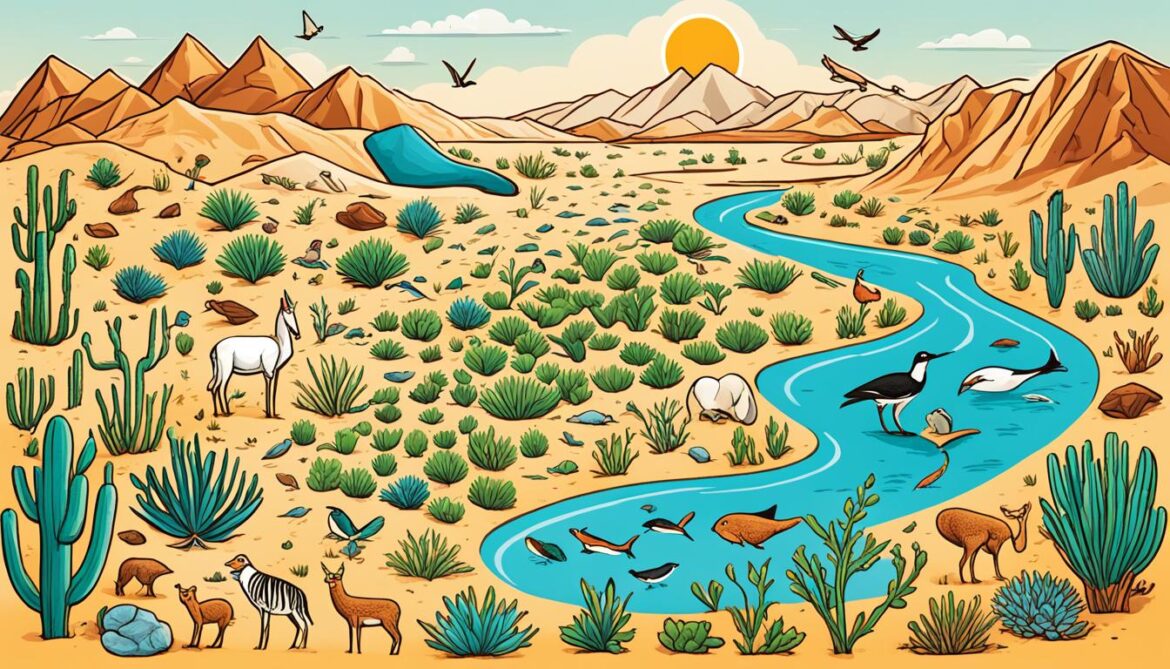
Obstacles to Implementation and Support Mechanisms
In order to establish a robust strategy for biodiversity conservation in Kuwait, certain obstacles must be overcome. One major challenge is the lack of coordination mechanisms among relevant entities and organizations. Without effective coordination, it is difficult to ensure a cohesive and unified approach to preserving Kuwait’s biodiversity. Additionally, a shortage of specialists in the field of biodiversity conservation poses a hurdle, as their expertise and knowledge are crucial for implementing effective strategies.
Another notable obstacle is the limited implementation of legislation related to biodiversity conservation. Despite the existence of laws and regulations, their enforcement and effective execution remain inadequate. This weak implementation undermines efforts to protect and preserve Kuwait’s diverse ecosystems and species. Furthermore, the presence of multiple powers and institutional overlap creates confusion and hampers progress in biodiversity conservation.
The Environment Public Authority, Public Authority for Agriculture Affairs and Fish Resources, and Kuwait University are among the entities associated with biodiversity in Kuwait.
To address these challenges, concerted efforts are underway to strengthen coordination mechanisms and fill gaps in institutional arrangements. By establishing effective collaboration and communication channels, stakeholders can work together towards shared conservation goals. Additionally, efforts are being made to enhance support mechanisms for the implementation of biodiversity conservation. This includes capacity-building initiatives to train and equip individuals with the necessary skills and knowledge to contribute effectively to biodiversity conservation efforts.
Supporting the Implementation of Biodiversity Legislation
In order to enhance the implementation of biodiversity conservation measures, it is crucial to prioritize the development and enforcement of legislation. Robust legislation acts as a strong foundation for biodiversity protection, providing legal frameworks that guide and regulate conservation efforts. By ensuring that legislation is comprehensive, up-to-date, and effectively enforced, Kuwait can safeguard its unique biodiversity for future generations.
Conclusion
Kuwait’s rich biodiversity faces numerous challenges as a result of human influence and environmental damage. The devastating impact of the 1990-91 invasion and subsequent war has left a lasting imprint on the country’s ecosystems. The degradation of marine and land biodiversity, ongoing urban expansion, and habitat encroachment are pressing issues that require immediate attention.
Preserving Kuwait’s biodiversity is of paramount importance. Conservation efforts, coupled with raising awareness and taking responsibility, play a crucial role in safeguarding the country’s unique natural heritage. By implementing stricter regulations, adopting sustainable practices, and restoring damaged areas, we can protect and preserve Kuwait’s biodiversity for future generations.
It is imperative that concerted efforts be made to ensure the long-term sustainability of Kuwait’s biodiversity. By embracing sustainable practices and valuing the importance of conservation, we can create a harmonious balance between human development and the preservation of Kuwait’s remarkable ecological diversity.






